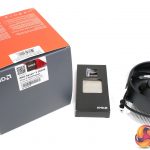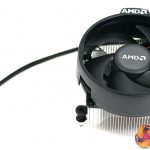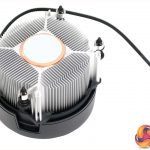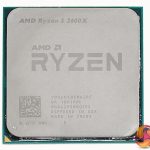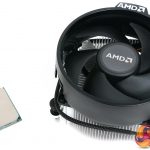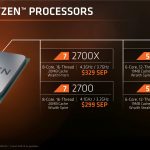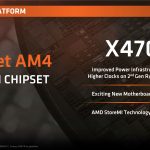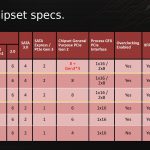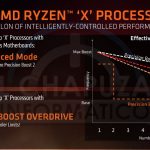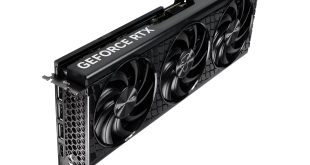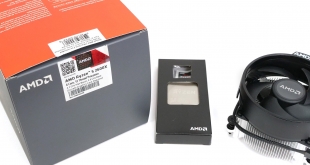
AMD has launched four new 2nd Gen Ryzen CPUs to mark the first birthday of the original Ryzen 7. Well Ok, that would have been March but it’s close enough. You can read our review of Ryzen 7 2700X HERE
You might consider 8 cores, 105W TDP and a price of £299.99 to be overkill, in which case we have good news for you as AMD has also updated the classic Ryzen 5 1600X.
The new model is Ryzen 5 2600X and it has an awful lot in common with Ryzen 5 1600X, although the Maximum Boost has increased by up to 200MHz. That may not sound like much extra speed but when you take a closer look there is plenty to enjoy with this CPU.
Note: if the above images are not displaying properly, you may need to disable Ad Block as it is known to interfere with our display code
Ryzen 5 2600X Specification:
- Six cores with 12 threads
- Base clock: 3.60GHz
- Boost clock: 4.2GHz
- L2 cache 3MBL
- 3 cache 16MB
- 12nm FinFet process
- Precision Boost 2
- Extended Frequency Range 2 (XFR2)
- Wraith Spire CPU Cooler included
- Dual Channel DDR4 Controller up to 3400MHz
- TDP: 65W
- Warranty: 3 years
There is little point in copying and pasting a chunk of our Ryzen 7 2700X review, so if you haven’t yet read/watched it do please take a look HERE.
Ryzen 5 2600X uses the 12nm LP process we saw with Ryzen 7 2700X and also packs in Precision Boost 2 and XFR2. The only difference in terms of the package is that Ryzen 5 2600X is supplied with a Wraith Spire CPU cooler, rather than the Wraith Prism you get with Ryzen 7 2700X.
In 2017 Ryzen 5 was significant as it brought six cores to the budget end of the desktop market compared to Intel’s quad core offering. Here in 2018 the unique selling point is somewhat more nuanced as Ryzen 5 has six cores and 12 threads while Intel Core i5-8600K has six cores and six threads. AMD leads in terms of threads but generally suffers in terms of clock speed and IPC.
The Ryzen 5 2600X has a base speed of 3.6GHz and a maximum Boost speed of 4.2GHz however the sustained all-core speed we saw during testing was 4.025GHz. In round terms that is 4.0GHz, which is encouraging as it falls towards the upper end of the 3.6GHz-4.2GHz range and we have to say the number sounds good. Everyone wants 4GHz or more from their CPU.
We are not yet sure how much of this speed comes as a result of the new X470 chipset, however our instinct is that the new platform plays little part in the equation. We are confident the new generation of motherboards are more solidly designed than the first generation of X370 products, however that is the result of evolution rather than a dramatic benefit from a new chipset.
Note: if the above images are not displaying properly, you may need to disable your Ad Blocker as it is known to interfere with our display code
Testing
We tested the Ryzen 5 2600X and Ryzen 7 2700X along with Ryzen 7 1800X and Ryzen 5 1600X and for comparison we used Intel Core i7-8700K and Core i5-8600K CPUs.
AMD test system:
CPU: AMD Ryzen 5 2600X
RAM: G.Skill SniperX 16GB DDR4-3400MHz
Motherboard: Gigabyte X470 Aorus Gaming 7 WiFi with BIOS F4c
Graphics: EVGA GTX 1080Ti SC
SSD: SK Hynix SC311STD
Coolers: Fractal Design Celsius S24
Power supply: Seasonic Prime Titanium 1000W
Intel test system:
CPU: Intel core i7-8700K
RAM: G.Skill SniperX 16GB DDR4-3600MHz
Motherboard: Gigabyte Z370 Aorus Ultra Gaming with BIOS F8
Graphics: EVGA GTX 1080Ti SC
SSD: Samsung 960 Pro
Cooler: Fractal Design Celsius S24
Power supply: Seasonic Prime Titanium 1000W
All four AMD CPUs were run on the Gigabyte X470 motherboard which means the choice of chipset plays no part in the proceedings. For AMD CPUs we used G.Skill SniperX DDR4-3400MHz with XMP enabled while the Intel CPUs were paired with G.Skill SniperX DDR4-3600MHz, also with XMP.
We overclocked by increasing core voltage to 1.35V for the new CPUs and 1.4V for the older models, increasing load line calibration and raising the core multiplier before testing with Blender to check for stability.
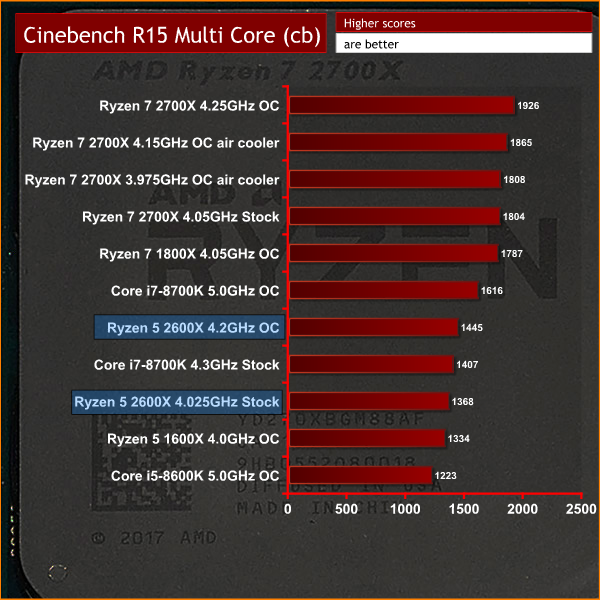
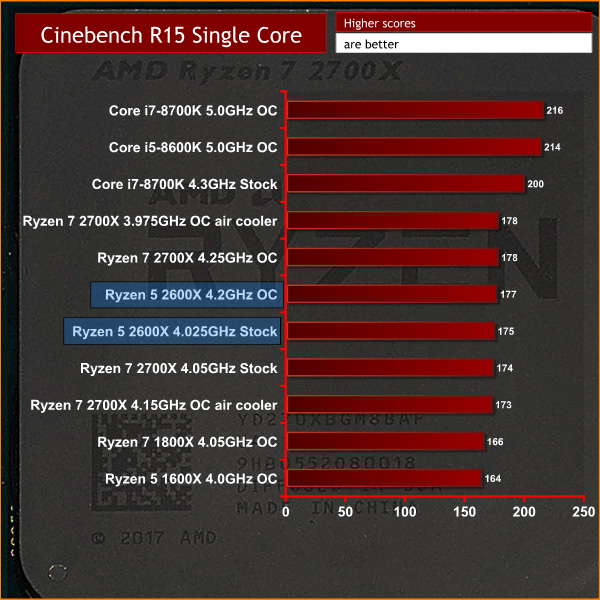
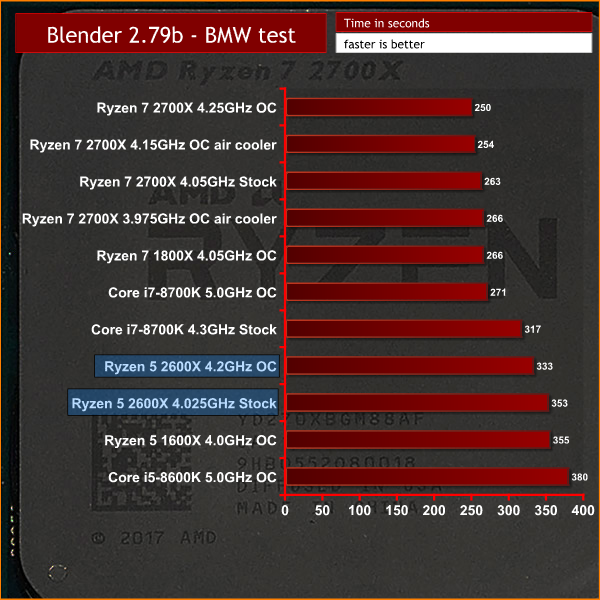
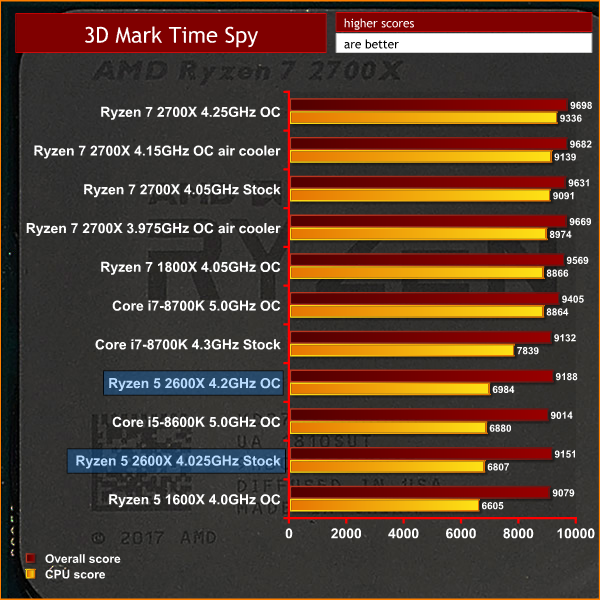
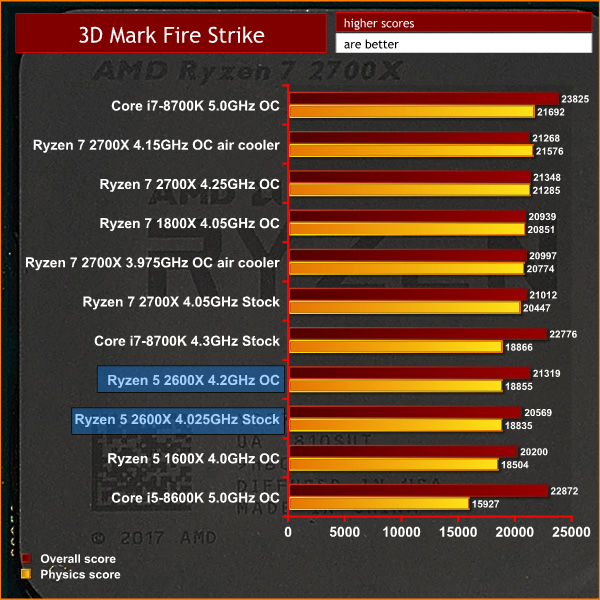
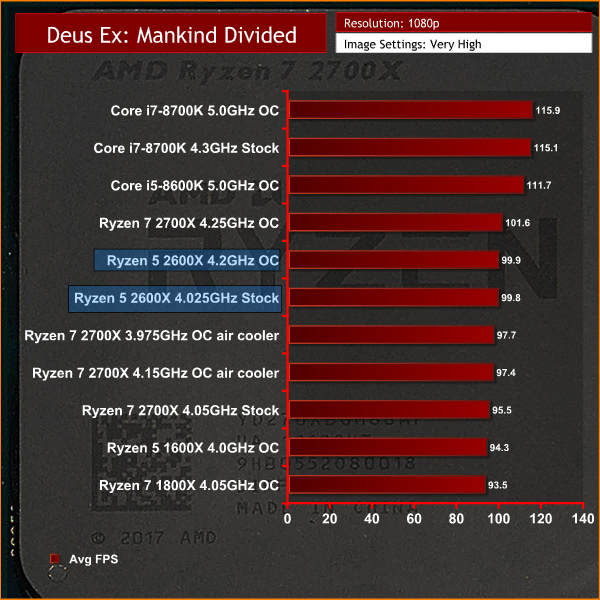
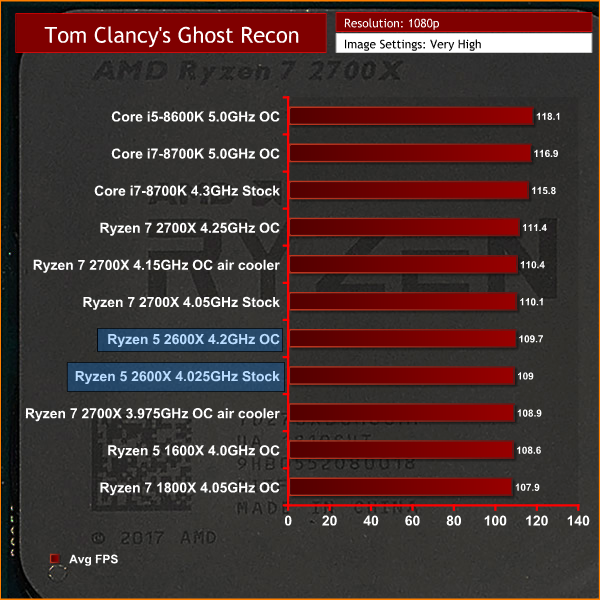
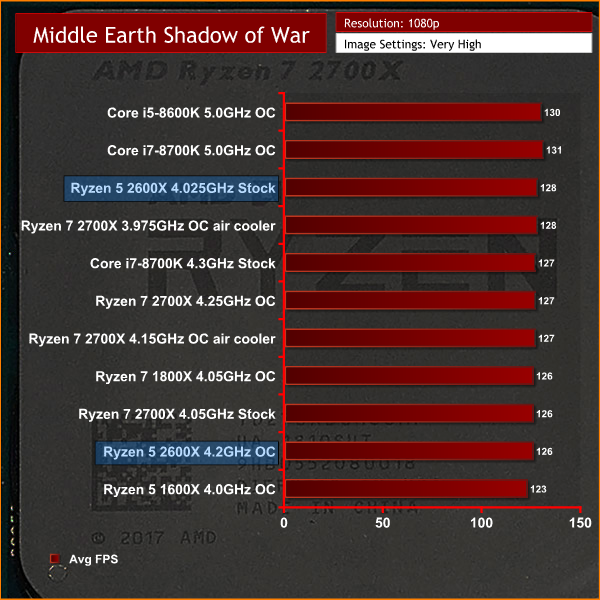
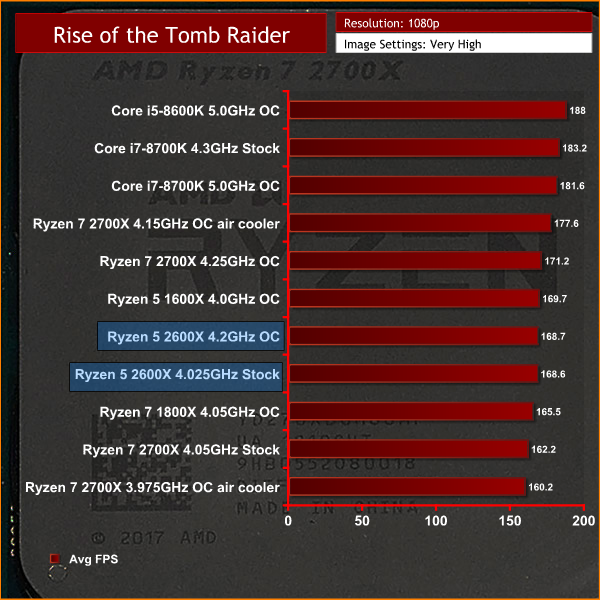
Testing Overview
Comparing Ryzen 5 2600X with Intel Core i5-8600K shows that AMD wins in pure tests of the CPU while Intel cleans up in gaming. The Core i5-8600K is impressive and when it is overclocked it delivers stunning gaming performance.
Overclocking Overview
Manually overclocking the Ryzen 5 2600X to 4.2GHz with 1.4V Vcore was straightforward, however the results showed very little advantage over default clock speeds. In pure CPU tests such as Cinebench and Blender the increased clock speeds helped to a small extent while in gaming tests the benefit was negligible.
Our conclusion is simple and we recommend that you leave Ryzen 5 2600X at default speed and rely entirely on Precision boost 2 to do your overclocking.
Power and Heat
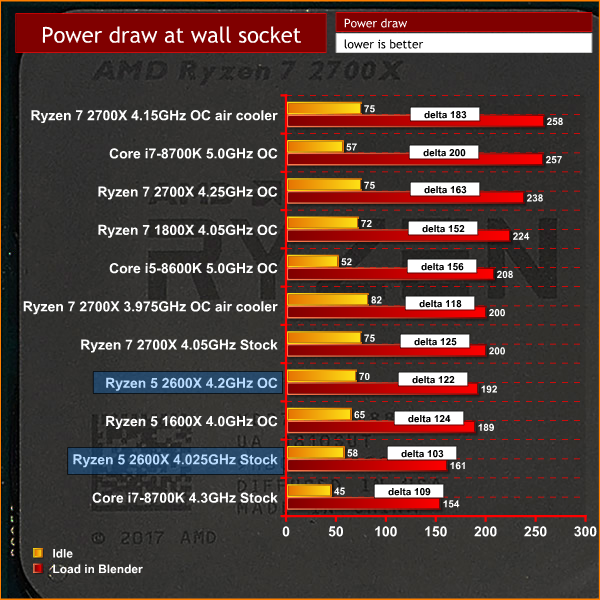
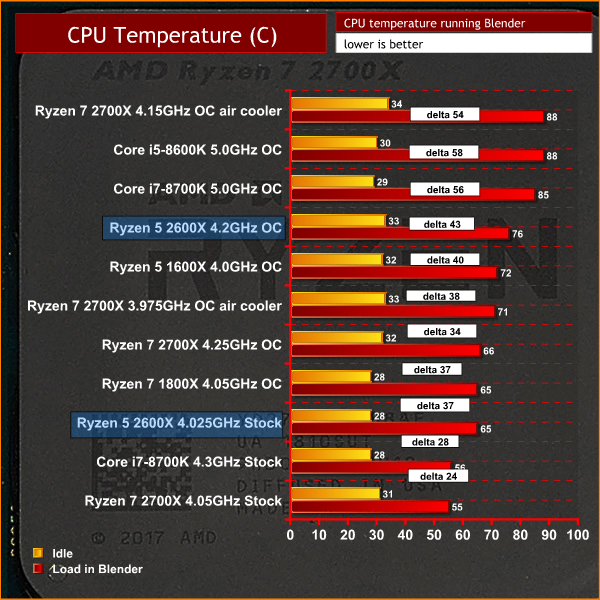
Power and Heat Overview
The Spire cooler looks fairly basic, however it has a copper core and delivers decent performance. In the video I said something like ‘As the workload increases the fan speed also increases’ which may sound like an obvious statement however my point was that the fan speed responds directly to the cooling load and as a result the noise can get intrusive.
To maintain a level playing field we tested Ryzen 5 2600X using the Fractal Design Celsius S24 240mm All In One.
Ryzen 5 2600X runs cooler than the 4GHz Ryzen 5 1600X, just as we would expect, and is an impressive package at stock clock speeds. It is interesting to note the overclocked Ryzen 5 2600X sits at 77 degrees when using the Fractal Design Celsius S24 cooler, which is exactly the same temperature as the overclocked Ryzen 7 2700X.
Ryzen 5 2600X has a reasonable level of power draw at idle, although there is room for improvement. At 4.025GHz the test system draws 161W at the wall socket which looks good compared to the 189W required to overclock the Ryzen 5 1600X to a manual 4.0GHz. We were unimpressed by the small amount of extra performance that was delivered by overclocking so those 28W were effectively being wasted.
AMD's 2nd Gen Ryzen makes marginal improvements over the original Ryzen and we have our doubts that the 12nm LP fabrication process delivers much benefit. The clever part of the revised CPU is the way that Precision Boost 2 pushes clock speeds close to the limits of the package. This means you get most of the potential performance without any effort as the CPU simply drops in the motherboard and works automatically to best effect.
On the other hand this means there is very little headroom left untapped for overclocking so our advice with Ryzen 5 2600X is that you should forget about overclocking. Performance of Ryzen 5 2600X builds on the superb Ryzen 5 1600X and delivers in all areas. You can do proper work such as video editing and can also play games as well, naturally, as the usual day-to-day PC chores.
Having said that, if your life leads towards gaming you will find the 5GHz performance of an overclocked Core i5 leaves Ryzen 5 trailing in game play.
When it comes to a buying decision we find ourselves in a similar position to our conclusion with the Ryzen 7 2700X. It makes no sense to upgrade an existing Ryzen 5 to the 2600X, although an upgrade from Ryzen 3 might be a good idea. If you currently own a Core i5 or Core i7 PC we doubt you will want to make the leap to Ryzen 5 2600X.
Where the new Ryzen 5 CPU stands out is for anyone looking to buy a new budget PC that is a good all-rounder that can perform in every area. When you add in a requirement of good value for money that sounds like an unfair request yet Ryzen 5 2600X can deliver on that promise.
Ryzen 5 2600X offers marginal improvements over Ryzen 5 1600X which might not sound like a vote of confidence but the fact of the matter is that 1600X was very good and 2600X is even better.
Buy from Overclockers UK for £209.99 inc vat HERE
Discuss on our Facebook page, over HERE.
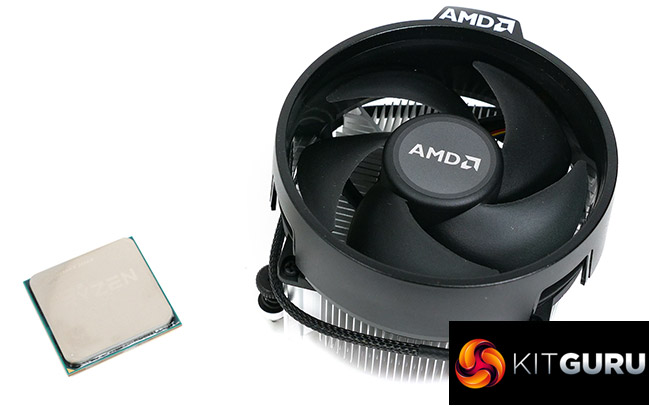
Pros:
- Precision Boost 2 delivers maximum performance.
- Soldered heat spreader helps cooling.
- 6 cores and 12 threads run at 4GHz.
- Cheaper than Core i5-8600K.
- Socket AM4 will be around for some years to come.
Cons:
- Intel 8th Gen is better for gaming.
- AMD Ryzen power draw is rather too high at idle.
- 12nm LP process is unimpressive.
- Overclockers have no headroom to play with.
KitGuru says: Ryzen 5 2600X offer superb all-round performance at low cost.
 KitGuru KitGuru.net – Tech News | Hardware News | Hardware Reviews | IOS | Mobile | Gaming | Graphics Cards
KitGuru KitGuru.net – Tech News | Hardware News | Hardware Reviews | IOS | Mobile | Gaming | Graphics Cards


